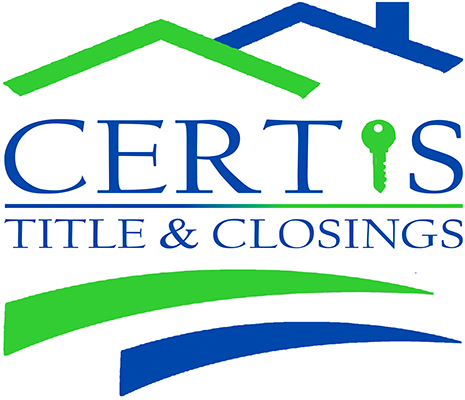
Understanding Homeowners Insurance: A Vital Shield for Your Investment
Homeowners insurance is not merely a contractual obligation; it’s a protective barrier that safeguards one of the most significant investments you will ever make. Imagine purchasing your dream home, a sanctuary where countless memories will be forged, only to be left vulnerable to unforeseen calamities. Homeowners insurance serves as your safety net, providing financial protection in the face of fire, theft, or natural disasters. But what does this insurance encompass, and how can buyers and sellers navigate this essential component of real estate transactions?
The Layers of Coverage: Decoding Homeowners Insurance Policies
At its core, homeowners insurance is designed to cover a plethora of risks associated with property ownership. However, not all policies are created equal. Understanding the various components can empower both buyers and sellers to make informed decisions. Here are the primary layers of coverage typically found in homeowners insurance:
1. **Dwelling Coverage**: This is the backbone of any homeowners insurance policy, covering the structure of your home itself. Whether it’s damage from a storm or a fire, dwelling coverage ensures that you can repair or rebuild your home.
2. **Personal Property Coverage**: Beyond the walls of your home lies your personal belongings, from furniture to electronics. Personal property coverage protects these items in the event of theft or damage.
3. **Liability Protection**: Life is unpredictable, and accidents can happen. Liability protection shields you from legal claims arising from injuries or property damage that occur on your property.
4. **Additional Living Expenses (ALE)**: If disaster strikes and your home becomes uninhabitable, ALE coverage helps you cover the costs of temporary housing and living expenses.
5. **Optional Endorsements**: Many homeowners opt for additional coverage to protect against specific risks, such as floods or earthquakes, which are not typically included in standard policies.
The Underwriting Process: The Gatekeeper of Homeowners Insurance
Once you understand the types of coverage available, the next step is to navigate the underwriting process. Think of underwriting as the gatekeeper that assesses the risk associated with insuring your home. Insurers evaluate various factors, including:
– **Property Location**: Homes in flood-prone areas or regions with high crime rates may face higher premiums.
– **Home Characteristics**: The age, size, and condition of your home can significantly influence your insurance rates. A newly constructed home may qualify for lower premiums compared to an older property requiring repairs.
– **Claims History**: If you have a history of filing claims, insurers may view you as a higher risk, which could lead to increased premiums.
– **Credit Score**: Surprisingly, many insurers consider your credit score when determining your premium. A higher score often translates to lower rates.
Interest Rates and Homeowners Insurance: A Symbiotic Relationship
While homeowners insurance is a distinct element of real estate, it’s essential to recognize how it intertwines with interest rates. When you secure a mortgage, lenders often require proof of insurance before finalizing the loan. This requirement serves as a safeguard for the lender’s investment.
Moreover, the overall cost of insurance can influence your monthly mortgage payment. Higher premiums can strain your budget, making it crucial to shop around for competitive rates. Understanding the interplay between interest rates and insurance can help you make strategic financial decisions.
Loan Documents: The Unsung Heroes of Homeownership
When embarking on the journey of homeownership, loan documents play a pivotal role. These documents serve as the legal framework for your mortgage, detailing the terms and conditions of your loan. Key documents include:
– **Loan Estimate**: This document outlines the estimated costs associated with your mortgage, including interest rates, monthly payments, and closing costs.
– **Closing Disclosure**: A detailed statement that summarizes the final terms of your loan, including any changes from the Loan Estimate.
– **Promissory Note**: This is your promise to repay the loan; it outlines the amount borrowed, interest rate, and repayment schedule.
– **Mortgage Agreement**: This legal document secures the loan with the property itself, giving the lender the right to foreclose if you default on payments.
Loan Origination: The First Step to Your New Home
Loan origination is the process by which a lender creates a new loan. It involves several critical steps, including application, underwriting, and approval. For buyers, understanding this process can demystify the path to homeownership. Here’s how it typically unfolds:
1. **Application**: The journey begins with filling out a loan application, where you provide personal and financial information.
2. **Documentation**: Be prepared to submit various documents, such as pay stubs, tax returns, and bank statements, to verify your financial standing.
3. **Underwriting**: This stage involves a thorough review of your financial profile and the property itself. Underwriters assess risk and determine whether to approve or deny your loan.
4. **Approval**: If all criteria are met, you’ll receive a loan approval, allowing you to move forward with your home purchase.
5. **Closing**: The final step is closing the deal, where you sign the necessary documents and officially take ownership of your new home.
Conclusion: A Call to Action for Home Buyers and Sellers
In the intricate world of real estate, understanding the nuances of homeowners insurance, the underwriting process, interest rates, loan documents, and loan origination is essential for both buyers and sellers. By equipping yourself with this knowledge, you can navigate the complexities of homeownership with confidence. Whether you are buying your first home or selling a cherished property, being informed is your greatest asset. If you have questions about homeowners insurance or any related topics, don’t hesitate to reach out. Visit our [contact page](#) to connect with our experienced team who is ready to assist you on your journey to homeownership.
